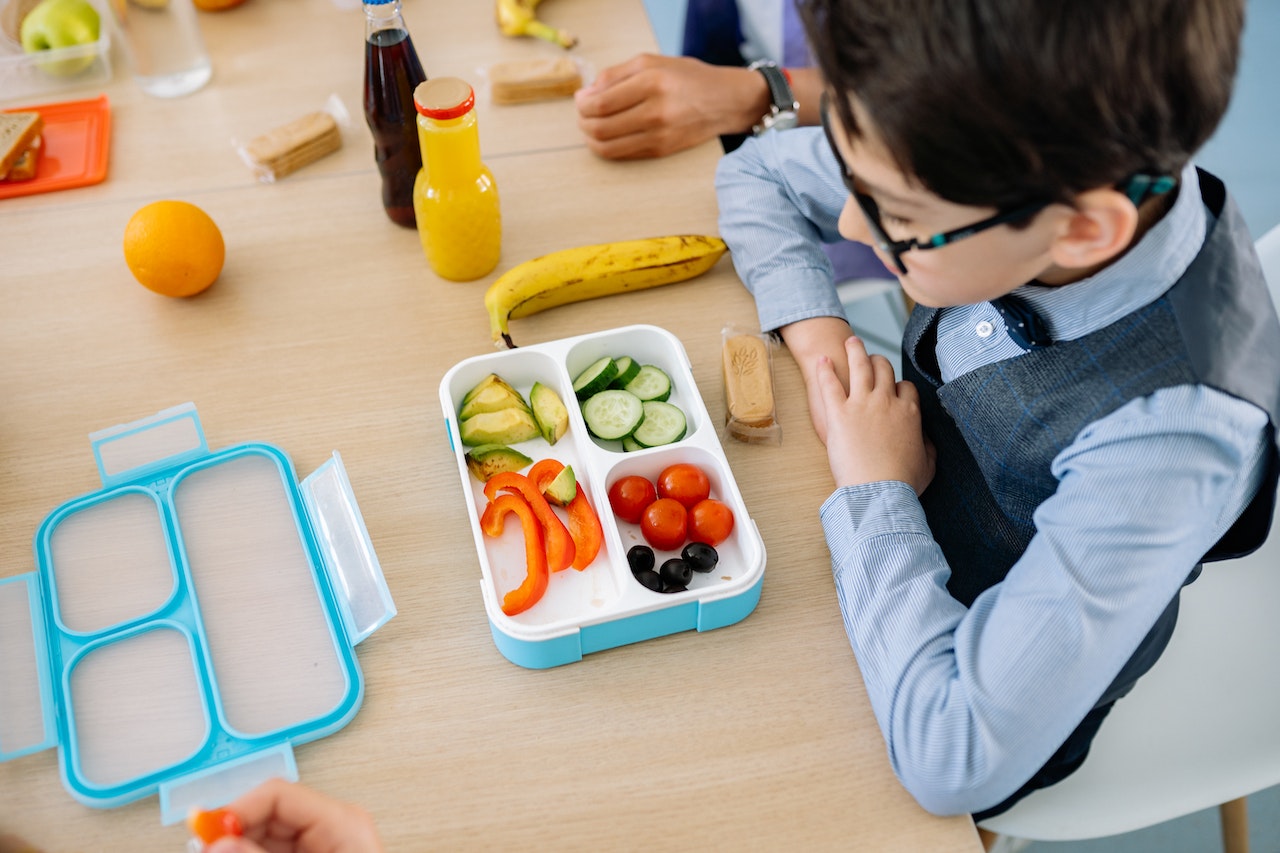Congrats! You’ve just taken on the lifetime challenge of ensuring that your little cherub eats healthy. Forget climbing Mount Everest or running a marathon – those are for quitters. You’ve chosen the real deal here: battling against candy, fries, and the suspiciously appetizing allure of gummy worms.
So, buckle up, parents! Here’s how to make your child love kale as much as they love cartoons.
1. Embrace the Art of Deception
We’re not suggesting you embark on a life of crime, but let’s be real, sometimes a little stealth is the way to go. Ever heard of “sneaky chef” techniques? Think mashed cauliflower in mac ‘n cheese, or spinach in brownies. They won’t know it’s good for them, and if they question the extra “green” in their brownie? “Oh honey, it’s just… um, green chocolate!”
2. Let Them Play with Their Food
Whoever said, “Don’t play with your food,” was not trying to feed a stubborn 5-year-old. Get them involved. Let them turn that boring toast into a smiley face with slices of banana for eyes and a strawberry for the mouth. If they’re part of the creation process, they’re more likely to eat it. Plus, Picasso started somewhere, right?
3. Make It a Family Affair
Everyone knows misery loves company, so why not spread the joy of “tasty” quinoa and brussels sprouts? If everyone at the table is eating it (and pretending to enjoy it), your child might just be fooled into taking a bite. Peer pressure isn’t just for teenagers!
4. Introduce a Point System (Or Bribery)
Alright, alright, I’m not suggesting you resort to shady deals, but hey, a little incentive goes a long way. “Eat your broccoli and you get a gold star!” And maybe after 10 gold stars, they get an actual reward. Like staying up an extra 15 minutes or picking the next family movie night flick (hopefully not “Attack of the Broccoli Monsters”).
5. Educate, But Make It Fun
Remember when your kiddo went through that dinosaur phase and could pronounce “Pachycephalosaurus” but not “spaghetti”? It’s because they were interested. Make nutrition fun. There are tons of books and shows that can make the journey of an apple, from tree to tummy, sound like an epic adventure.
6. Exposure, Exposure, Exposure
You know what they say, the 57th time’s a charm! Just because they refused peas 56 times doesn’t mean they’ll hate it forever. Tastes evolve. One day they hate mushrooms, the next day it’s their favorite pizza topping. Don’t give up!
7. The Occasional Junk Food is Okay
Yes, you read that right. It’s not about never letting them touch a candy bar but about balance. If they see it as a forbidden fruit, they’ll just want it more. Let them have a treat now and then, so they understand it’s okay in moderation. Plus, when they’re old enough to know about your secret chocolate stash, they’ll appreciate your restraint.
8. The Supermarket Safari
Treat your trip to the grocery store like an exciting safari adventure. “Look, darling! Here we have the wild blueberries, known to give superpowers to those who eat them!” Educate them about different fruits and vegetables, let them pick out a new one to try each week. If they pick it, they might just eat it.
9. Theme Nights – Because Who Doesn’t Love a Costume Party?
Introduce “Around the World” dinner nights. Fancy some sushi? Let’s jet off to Japan! Craving tacos? Welcome to Mexico! Not only will this make dinner fun, but it’ll also expose them to a variety of cuisines and nutrients. And yes, if they want to wear a sombrero or a kimono at the dinner table, let them.
10. Engage Their Competitive Spirit
Children are naturally competitive. “Did you know that superheroes eat a lot of spinach? It’s how they get their strength!” Or “I bet you can’t finish those carrots before I finish mine!” Sometimes, a little challenge can persuade the most stubborn of eaters.
11. The Name Game
Your kid doesn’t want to eat zucchini? Have they tried “Ninja Turtle Sticks” yet? Sometimes, renaming a dish can make it 100 times more appealing. Would you rather have fish and some veggies, or “Mermaid’s Delight with a Side of Treasure”? Thought so.
12. Grow Your Own
If you have even a tiny bit of outdoor space (or a windowsill for that matter), try planting some veggies or herbs. Children are more inclined to eat something they’ve watched grow from a tiny seed into a full-blown, edible plant. It’s magic, it’s science, and it’s nutrition all rolled into one!
13. Bond Over Cooking
It might be messier and take three times as long, but let them help in the kitchen. Kids who cook (or at least assist in the process) develop a deeper appreciation for their food. Plus, who knows, you might just be raising the next MasterChef Junior.
14. Keep the Junk Out of Reach
Out of sight, out of mind. While it’s okay to have treats occasionally, don’t make them easily accessible. Place healthier snacks at eye level and junk food (if any) higher up. Your little one is less likely to scream for cookies if they can’t see them.
15. Celebrate the Small Wins
So, they tried a pea and didn’t like it? That’s okay! Celebrate the fact they tried something new. Small encouragements can lead to bigger victories in the future.
In the grand, messy realm of parenthood, remember that every child is different. What works for one might not work for another. The key is persistence, creativity, and a good dose of humor.
And hey, if all else fails, remember that even adults have some questionable food choices. Ever seen someone dip their fries in a milkshake? Yep, we all have our moments. So, cheers to you and your ever-evolving adventure in gastronomy with your little one!
Pro Tips for the Ever-Persistent Parent:
- The Color Game: Challenge your kiddo to eat foods of different colors. “Today, let’s eat something red, green, and yellow!” This not only makes mealtime fun but ensures they get a variety of nutrients.
- Blend It In: Smoothies are magical. You can throw in spinach, avocado, and even some seeds, and as long as there’s a banana or some berries, it’s a delicious treat in their eyes.
- Tiny Portions: Sometimes a plate full of veggies can be intimidating. Start with small portions. It’s less daunting, and they might be more likely to clear their plate.
- Funky Cutlery and Plates: Invest in some fun eating utensils and plates – think dinosaur forks or plates with sections that can be filled with different foods.
- Spice It Up: Not all kids will go for this, but some genuinely enjoy flavors beyond bland. Introduce mild spices and see if it adds some allure to those veggies.
- Positive Reinforcement: Praise them when they try new foods. Positive feedback can boost their confidence and willingness to try again next time.
- Storytime: Every vegetable has a story. Where did it come from? How does it grow? Sometimes knowing the backstory makes it more interesting.
- Make Dips Your Best Friend: Hummus, yogurt dips, or a mild salsa can sometimes be the key to getting those veggies in.
- The 10-Times Rule: Research suggests kids might need to be introduced to a new food up to 10 times before they acquire a taste for it. Patience is your friend.
- Don’t Make a Big Deal: If they reject a food, don’t make a fuss. Stay calm, remove it, and try again another day. Sometimes the drama adds to the refusal.
- Set the Example: Kids mimic adults. If they see you enjoying your greens, they’re more likely to try them too. So, dig into that salad and show them how delicious it is!
- Engage Their Curiosity: If they ask questions, be ready with answers. “Why is broccoli green?” or “Why are carrots good for my eyes?” A mini science lesson can spike interest.
- The No Thank You Bite: Before outright refusal, encourage them to take a ‘no thank you’ bite. They can say ‘no thank you’ after they’ve tried it.
- Snack Smart: Make healthy snacks available for those in-between meal munchies. Think fruit slices, nuts (if no allergies), or yogurt.
- Stay Updated: Children’s food preferences can change as quickly as their shoe sizes. Just because they didn’t like something last month doesn’t mean they won’t love it this month.
Remember, at the end of the day, it’s about the journey, not just the destination. Celebrate the progress, however small, and know that you’re setting your child up for a lifetime of better health choices!
FAQs: Making Your Child’s Diet A Masterpiece
Every child has their preferences, and it’s common for many to go through a veggie-averse phase. Continue offering different types and preparations of vegetables without pressuring them. Over time, tastes change. If you’re genuinely concerned about their nutritional intake, consult a pediatrician.
A balanced diet, with a mix of fruits, veggies, proteins, grains, and dairy, generally ensures a good nutrient profile. However, if you suspect deficiencies or if your child follows a special diet (like vegan), it’s wise to consult a pediatric nutritionist.
While multivitamins can supplement a diet, they shouldn’t replace whole foods. If you feel your child needs a multivitamin, consult with your pediatrician to find the best fit.
Lead by example! Keep sugary drinks as occasional treats. Make water fun by adding slices of fruit for flavor or using fun cups and straws.
While it’s okay occasionally, variety is crucial for nutritional balance. Slowly introduce new foods alongside their favorites to expand their palate.
Children have smaller stomachs and can also be influenced by distractions or moods. Ensure a calm eating environment, and if they’re genuinely not hungry, don’t force them. Focus on nutrient-dense foods for the bites they do take.
Absolutely! It’s about balance. An occasional treat is fine and can make them appreciate the special nature of these foods. It’s consistent, daily intake that becomes a concern.
Let them enjoy! Restricting them completely can lead to overindulgence later. Just balance it out with healthier choices before or after the event.
While fruits are nutritious, they often lack the specific nutrients found in veggies. Continue offering a variety of vegetables, and over time, their tastes may change. Remember, persistence!
It’s essential to find substitutes that provide similar nutritional value. For example, if your child is allergic to dairy, calcium-fortified almond or soy milk can be alternatives. Always consult with a nutritionist or pediatrician to ensure they’re not missing out on essential nutrients.



